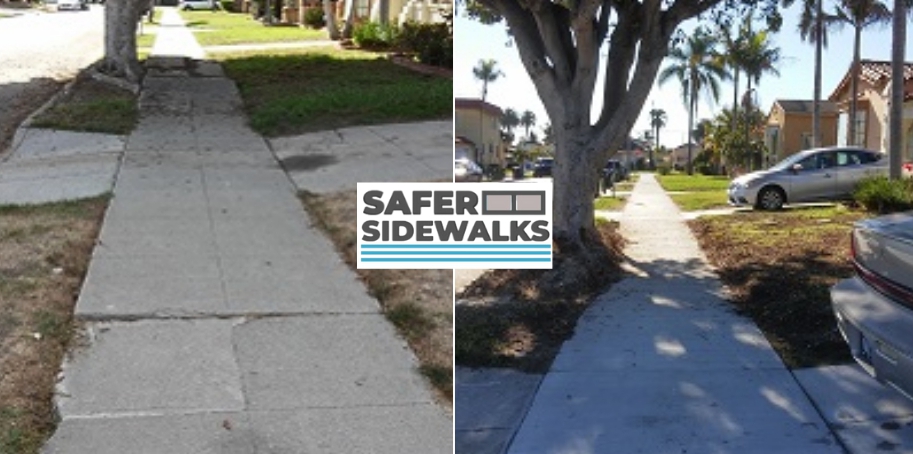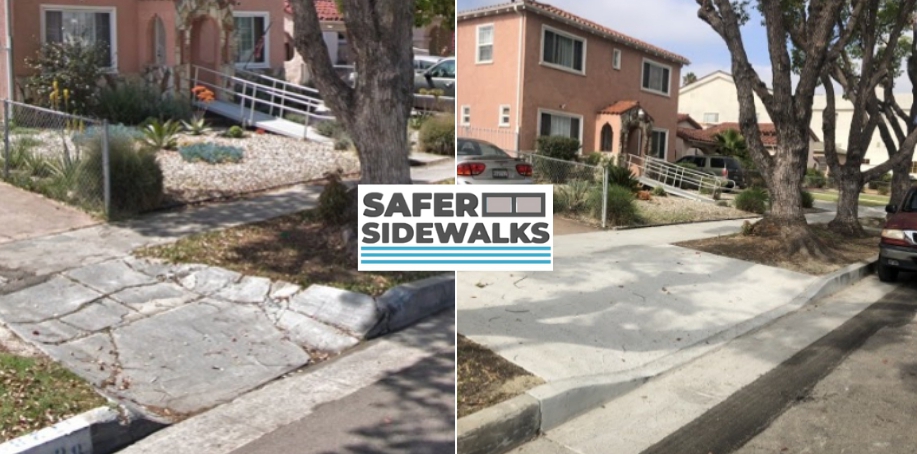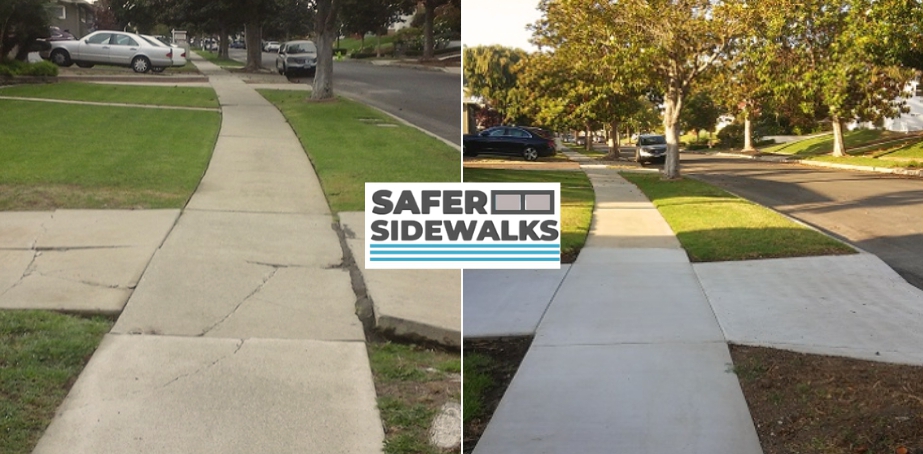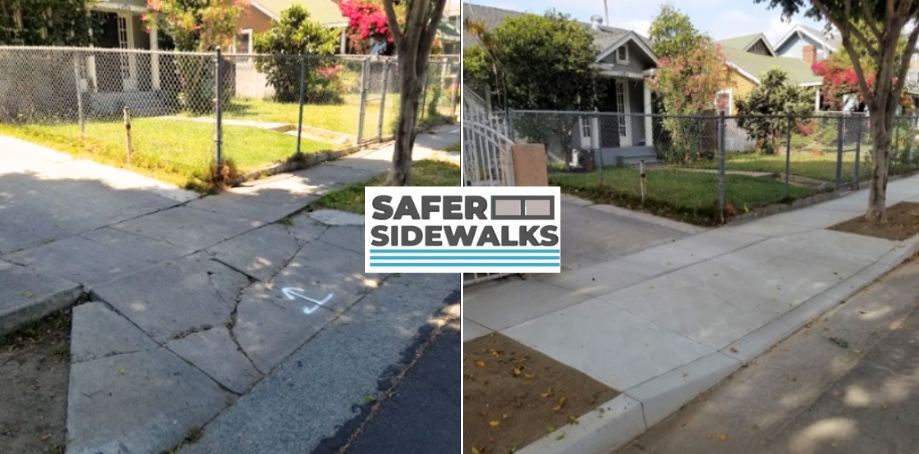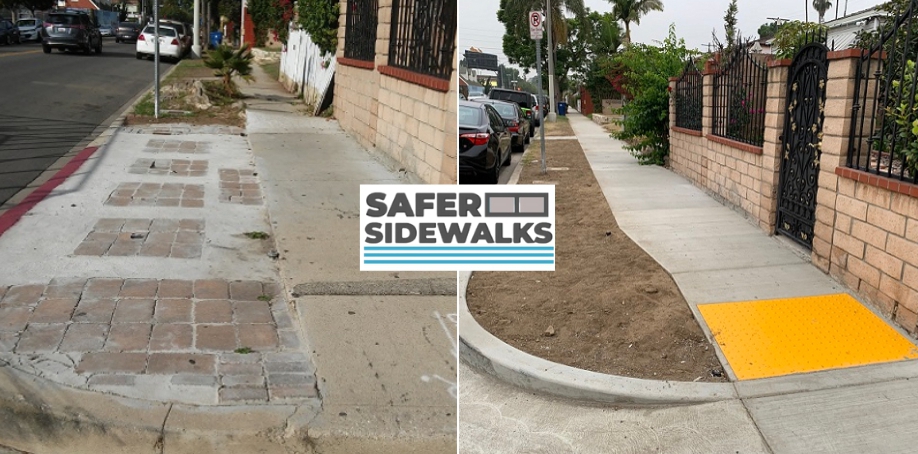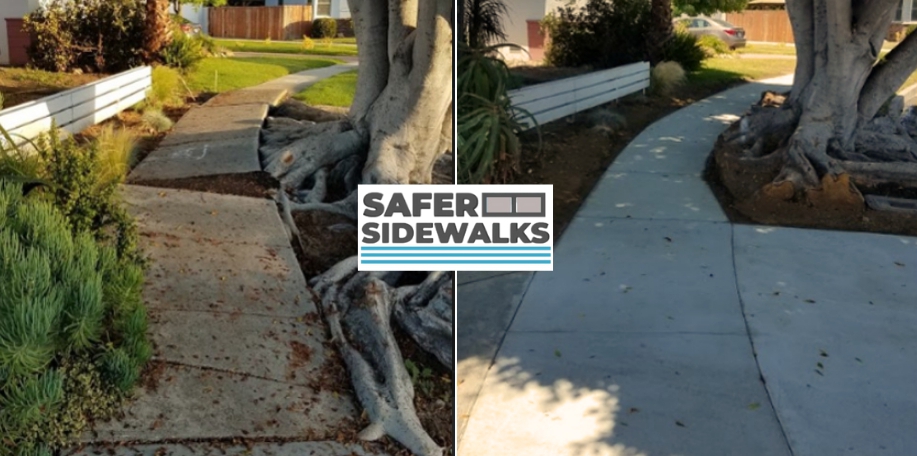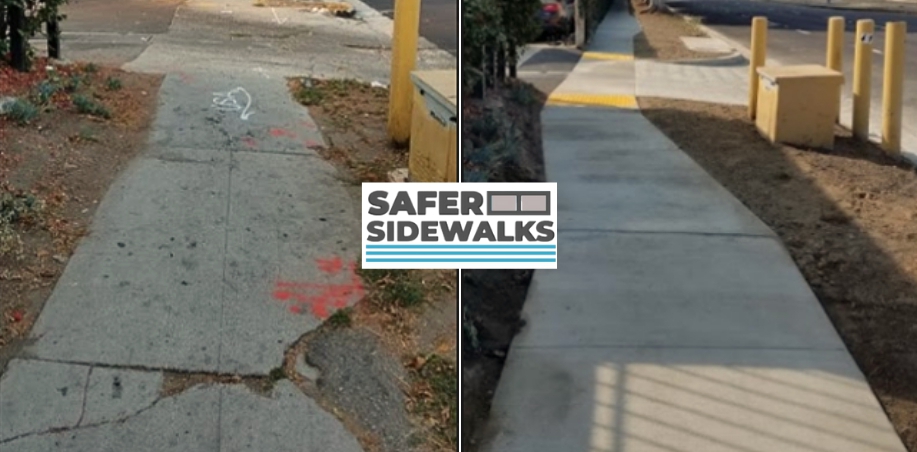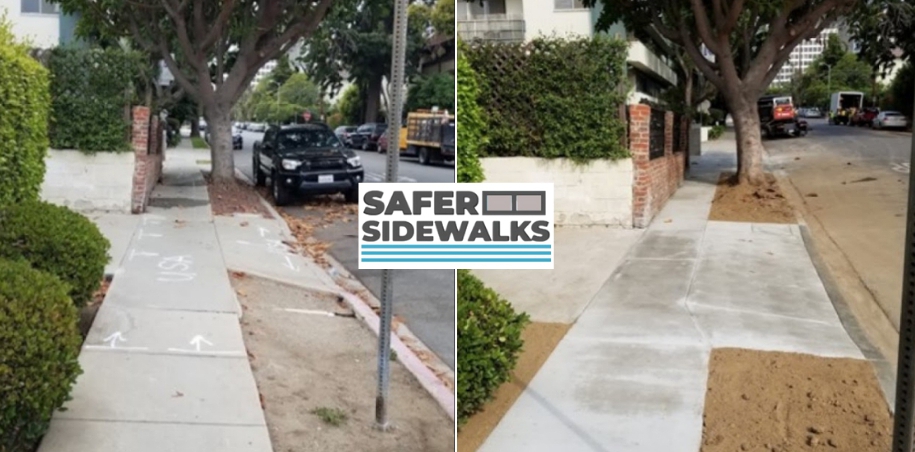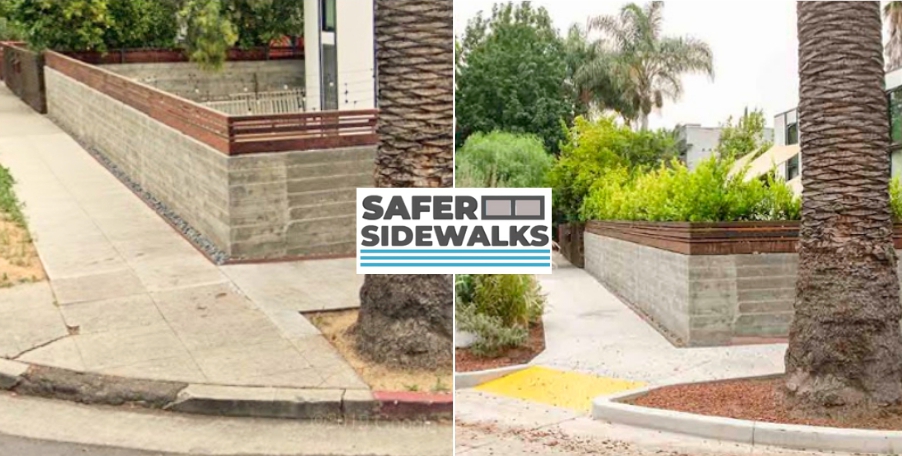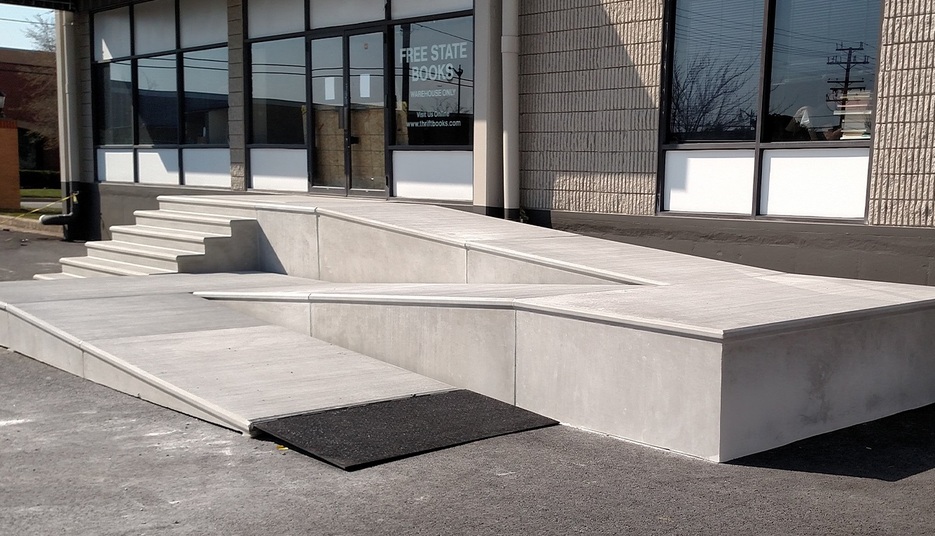

by Alonso Romero
CA State Lic. Concrete & Masonry C-8
CA State Lic. General Construction - B
Buckaroo Banzai the Concrete Nerd
Actual person performing the job
Date: Apr 27, 2024
Handicap Concrete Ramp Contractor Los Angeles
You probably don’t give much thought to the steps up to your home or business. Maybe you have a grand entrance and porch like many of the lovely cottages and craftsman style homes in LA have. Perhaps your business has just a little step up into the building.
You may not think much of it, but anyone who has mobility issues does think about those steps. How are they going to get into that business? Is your building ADA compliant? Maybe your parents are getting older or your joints just don’t work like they used to. How are you going to get into your home?
Unfortunately, we live in an increasingly litigious society. You don’t want to be hit with a lawsuit because someone tripped on your steps when they could have made it up to your building with ease using a ramp. Businesses also are liable for ensuring their buildings are ADA-compliant. You could be hit with thousands of dollars in fines, if your building is not accessible. Choosing concrete for your ADA-compliant ramp gives your building a solid entrance that is easy to install and maintain.
Wheelchair ADA Compliance Contractor Los Angeles
You may have heard about the ADA. The Americans with Disabilities Act, or ADA, is a federal law signed back in 1990 to protect the rights of disabled people. It requires businesses to install ramps according to specific requirements. Businesses that don’t comply with the ADA may face fines, lawsuits and other penalties. The first violation can result in a find of up to $75,000 alone! That’s pretty substantial. Not only that, but states and local governments may also impose additional fines. So, if you are a business owner who owns your own business, it only makes sense to install an ADA-compliant ramp ASAP.
Businesses aren’t the only people who can install an ADA-compliant ramp. Individual homeowners, of course, can install an ADA-compliant ramp. You may not think you need one now, but if you take care of individuals with mobility issues, it’s a nice touch. There may also come a time when you need a little help getting into your home. So, why not take care of things now?
Ready to install an ADA-compliant ramp in your business or home? Consider concrete. Sure, you can probably get away with a metal or wood ramp, but which is actually going to stand the test of time and require the least amount of upkeep? That’s right. Concrete. There’s a reason the ancient Romans used concrete to build their aqueducts (which are still standing, by the way).
Concrete is one of the most versatile and easy to care for building materials on the market – for literally thousands of years. Not only that, but you can put almost any kind of finish on a concrete ramp. You will, of course, want a non-slip finish. With concrete, you can install a salt or broom finish. Both finishes give your ramp a sleek, modern feel with a non-slip surface.
How do I install a concrete ramp to my business or home?
Installing a concrete ramp to your business or home is easier and quicker than you may think. In fact, when it comes to building the ramp, it may take as little as a week! However, there is a little work to be completed before you get started:
-
Get a design from an architect. Most licensed concrete contractors work with architects who specialize in this type of design. They can give you a referral to an architect to design your concrete ramp.
-
Pull the permits. Of course, for compliance issues, you want to make sure your ramp is up to code and has all the required permits. You may be thinking…I can get this done faster without permits. Yes, but do you want to deal with the liability headaches that come with an unpermitted ramp? Again, when you work with a licensed concrete contractor they can pull all the requisite permits and save you some time in the process.
-
Hire a licensed concrete contractor for the job. Sure, you could probably hire a general contractor for a job like this. However, licensed concrete contractors have a more in-depth knowledge of how concrete structures need to be built and poured. When doing skilled work like this, it’s best to hire a professional with the specialized knowledge necessary to complete it.
Licensed concrete contractors will know and understand the specifications under which your ramp must be built to be ADA-compliant. After all, you want your ramp to pass all inspections necessary, right? Here are just some of the specifics a licensed concrete contractor will follow to ensure your ramp is ADA-compliant:
-
The ADA requires curb ramps along any accessible route in a public area, where the path has a change in height greater than ½ inch.
-
The curb ramp must be 36 inches wide, not including handrails.
-
Handrails are required if the ramp rises more than 6 inches.
-
The length of a ramp isn’t restricted, so long as the ramp doesn’t go over 30 inches in height. However, an excessively long ramp can be difficult for a person in a wheelchair or a walker to navigate.
-
A landing must be installed at the top and bottom or a ramp. It must be 60 inches long and 36 inches wide.
-
Handrail extensions are required at the top and bottom of a run. They must be at least 12 inches long.
-
Your ramp design must also be designed to avoid water from pooling.
Not only that, but there are also very specific requirements for slope. Remember middle school math? The slope deals with how steep the ramp is. Remember, most people using a wheelchair have to use their arms to get up to your business or home. So, it’s a little like Goldilocks and the Three Bears. You don’t want your ramp to be too steep, but you also don’t want it so flat that it takes up a lot of space on your property. You want that slope to be juuuusst right. This is where hiring an architect to design your ramp only makes sense. They will be able to calculate the specific slope necessary to ensure ease of entrance to your building, and make sure it’s aesthetically pleasing and compliments your property.
You may also think about installing side flares on your ramp. What are side flares, you may be asking yourself. Envision an intersection sidewalk with a ramp leading to the road. The side flares are those mini ramps on both sides of the main ramp. These are installed to reduce the risk of tripping and to help a person using a wheelchair maneuver better if the landing space is restricted.
It’s a long list, right? This is nothing to a licensed concrete contractor. They have the training to ensure your ramp follows all these specific compliance requirements.
How much does it cost to build a concrete ramp?
Ahhh…the age-old question. How much is all of this going to cost? That depends. Usually, concrete work costs between $15 to $20 per square foot. That’s for a very basic gray, flat slab.
When you’re talking about installing a ramp, then you get into slope and all those compliance issues listed above. Then there’s the issue of how the ramp is going to be incorporated into your building. After all, you want to make sure the ramp is useful in getting a person from point A to point B. But you also don’t want the ramp to make it difficult for other people to enter your property.
That’s why the first thing to do in installing an ADA-compliant concrete ramp is to consult an architect. Once a design is in place, you can get a more accurate price from your licensed concrete contractor.
Who we are and how we can help
Time to remove those barriers to accessing your home or business!
Concrete Decor Contractor is a licensed concrete contractor. We work closely with architects and city inspectors to ensure that all of our concrete ramp work is ADA-compliant and passes city inspections with ease. With over 20 years of experience, we can ensure that your concrete project is completed in a timely manner and on budget.
Give us a call for a free quote today.

